More than 70 years after the launch of the original Land Cruiser, Toyota is proud to reveal the all-new 2024 Toyota Land Cruiser. This next-generation model is destined to continue the icon’s history of continuous production into a new era while drawing directly on the qualities that made the Land Cruiser name synonymous with strength and go-anywhere reliability.
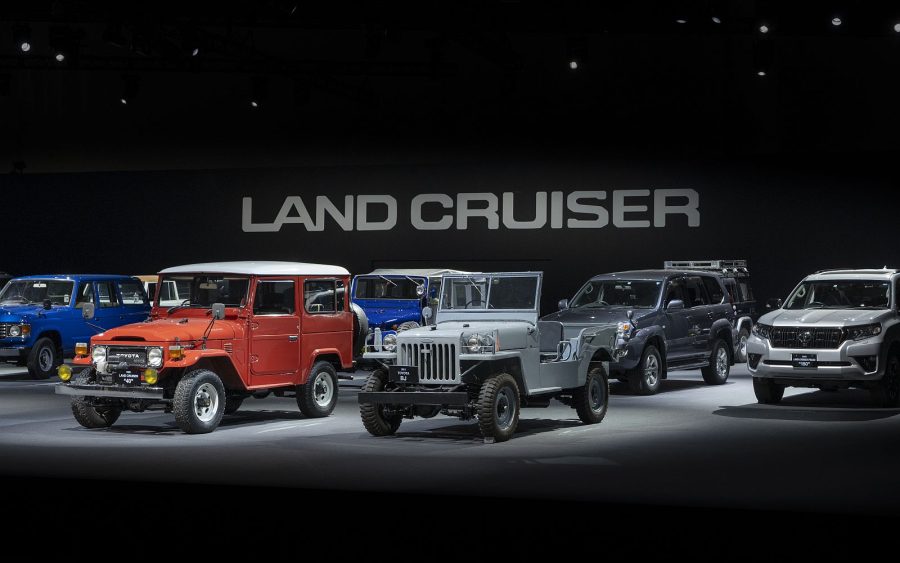
Pre-sales of the new 2024 Toyota Land Cruiser for UK and European customers will open during the fourth quarter of this year, with the first vehicle deliveries expected in the first half of 2024. Further details of the UK model range and pricing will be announced soon, but the following is what we can reveal right now.
Please note: the availability of vehicle features described in this article may be dependent on the grade of vehicle. Consult your local Toyota centre or visit toyota.co.uk for more information.
Classic construction with improved all-terrain performance
This new model represents the fifth generation of the Land Cruiser’s Light Duty, or Prado, product line, and as such will likely be identified by its 250 series chassis code. It retains the traditional body-on-frame construction of every Land Cruiser and follows the larger 300 series (Station Wagon product line) Land Cruiser in adopting our GA-F platform, which plays a key role in significantly improving off-road performance.

The new frame is 50% stiffer, while the rigidity of the combined body and frame has been improved by 30%. These substantial increases contribute to improved responsiveness, handling and ride comfort, both on- and off-road. Suspension performance has also been enhanced, particularly in the area of wheel articulation – a key factor in off-road driving. At the same time, the new model is easy to manoeuvre and more comfortable on the road, true to our commitment to making the 2024 Land Cruiser eminently practical and tailored to customers’ day-to-day needs.
New electric power steering
The 250 series Land Cruiser is the first to adopt an electric power steering system. It reduces the amount of kickback that can occur when navigating rough terrain and provides smoother, more direct steering and improved manoeuvrability at all speeds. This new system also allows the new Land Cruiser to include Lane Tracing Assist as part of its comprehensive Toyota Safety Sense active safety and driver assistance package.
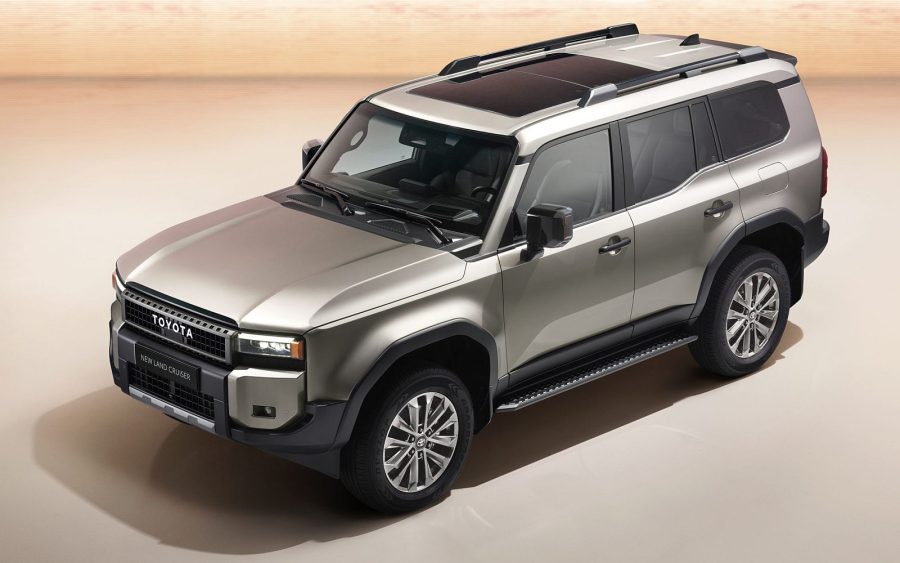
Disconnecting the front anti-roll bar
Further off-road capability is built-in with a new electronically disconnecting front anti-roll bar mechanism. This technology enables the driver to disengage the anti-roll bar using a switch on the dashboard, a facility that allows maximum wheel articulation – and therefore maximum tyre contact with the ground – to successfully tackle challenging terrain at low speeds.

Further support when driving off-road is provided by upgrades to the Multi-Terrain Monitor and Multi-Terrain Select system. Using high-resolution cameras and a dashboard display, the Monitor gives the driver a clear view of the area immediately around and beneath the vehicle. Meanwhile, the Select system automatically adapts the chassis and performance to suit the demands of different off-road driving conditions.
2024 Toyota Land Cruiser: new powertrain
In the UK and Western Europe, the new 2024 Land Cruiser will be introduced with our 2.8-litre 1GD-FTV turbo diesel engine – the same 2.8-litre unit installed in the Toyota Hilux. Engineered for a strong balance of fuel efficiency and performance, this four-cylinder engine produces 201bhp and is matched to a new eight-speed Direct Shift automatic transmission, giving it the strength to tow loads of up to 3,500kg.
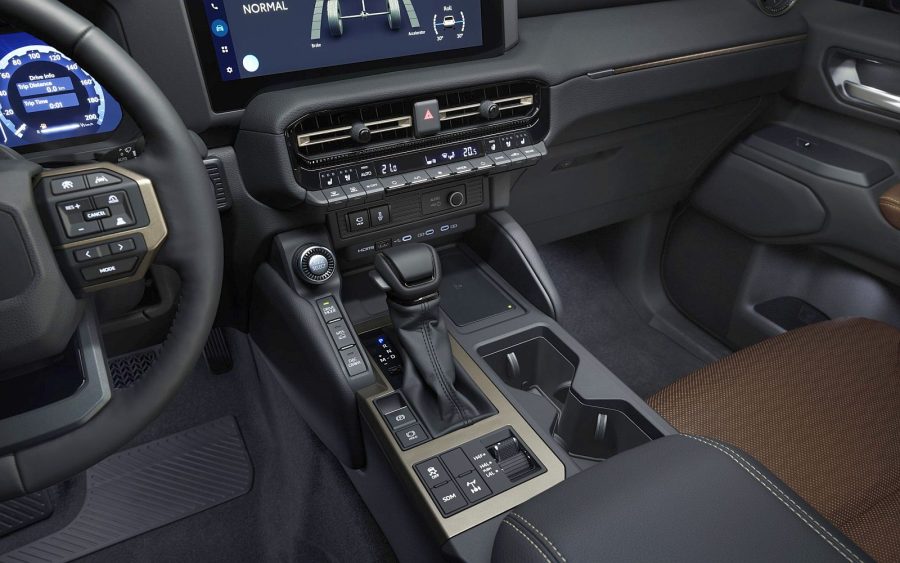
An electrified version that combines the same 2.8-litre turbo diesel engine with 48V mild hybrid technology will be available in early 2025.
Design – modern yet traditional
The styling of the 2024 Land Cruiser captures the lean, functional beauty that’s found in the best professional tools. Design cues inspired by the model’s long heritage reinforce the ‘back to its origins’ ethos of the new Land Cruiser, creating a modern interpretation of the traditional form-follows-function approach.
In profile, the new 2024 Land Cruiser has a classic silhouette based around strong horizontal lines. It measures 4,920mm long, 1,980mm wide and 1,870mm tall, while the wheelbase is 2,850mm. Off-road performance is helped by shorter overhangs, sculpted corners and bodywork that subtly narrows towards the sills. Other body parts have been thoughtfully designed for easy replacement in the event of damage.

The interior can be specified with a choice of either five- or seven-seat configurations and offers a design that underlines the strength and functionality of an authentic off-roader. This is evidenced in details such as the horizontally arranged instrument panel and switches that are shaped for easy operation, even when driving over challenging terrain. All-round visibility has been given priority, assisted by the lowered belt line that allows deeper side windows to be fitted.
2024 Toyota Land Cruiser: technical specifications
| ENGINE | ||
| Engine type | Four cylinders in-line | |
| Displacement (cc) | 2,755 | |
| Valvetrain | 16-valve DOHC | |
| Fuel injection type | Common rail | |
| Bore x stroke (mm) | 92.0 x 103.6 | |
| Max power (bhp/DIN hp/kW @ rpm) | 201/204/150 @ 3,000-3,400 | |
| Max torque (Nm/rpm) | 500 @ 1,600-2,800 | |
| TRANSMISSION | ||
| Type | Eight-speed automatic | |
| Ratios | 1st | 4.413 |
| 2nd | 2.808 | |
| 3rd | 1.950 | |
| 4th | 1.511 | |
| 5th | 1.274 | |
| 6th | 0.100 | |
| 7th | 0.793 | |
| 8th | 0.651 | |
| Reverse | 3.645 | |
| Final drive ratio | 3.583 | |
| PERFORMANCE | ||
| Acceleration 0-62mph (sec) | Pending homologation | |
| Max. speed (mph) | 102 (18-inch wheels); 105 (20-inch wheels) | |
| FUEL CONSUMPTION (WLTP) | ||
| Combined cycle (mpg) | Pending homologation | |
| Fuel tank capacity (l) | 80 | |
| EMISSIONS (WLTP) | ||
| Emissions standard | Euro 6E | |
| CO2 emissions (g/km) | Pending homologation | |
| SUSPENSION | ||
| Front | Double wishbone | |
| Rear | Four-link rigid with lateral control arm | |
| BRAKES | ||
| Front / rear | Ventilated discs | |
| STEERING | ||
| Type | Rack and pinion with electric assistance | |
| Turns lock-to-lock | 3.24 | |
| OFF-ROAD PERFORMANCE | ||
| Approach angle (deg) | 32 | |
| Departure angle (deg) | 17 | |
| Minimum running ground clearance (mm) | 215.3 | |
| DIMENSIONS | ||
| Overall length / width / height (mm) | 4,925 / 1,980 / 1,935 | |
| Wheelbase (mm) | 2,850 | |
| Front / rear track (mm) | 1,664 / 1,668 | |
| Front / rear overhang (mm) | 935 / 1,140 | |
| Turning radius – tyre / body (m) | 6.0 / 6.4 | |
| Load space capacity (m3 VDA) | 1,063 | |
| WEIGHTS | ||
| Kerb weight (kg) | 2,330-2,550 | |
| Gross vehicle weight (kg) | 3,150 | |
| Towing capacity – braked (kg) | 3,500 | |
2024 Toyota Land Cruiser First Edition
The new 2024 Land Cruiser will be introduced with a special First Edition model, available exclusively for customers to reserve during the initial pre-sales period later this year. Only 3,000 examples of this limited-run version will be built for Europe, which will be distinguished by special heritage-inspired styling features (see also lead image). Details include classic round headlights and two dedicated bi-tone exterior paint finishes: Sand and Smoky Blue.
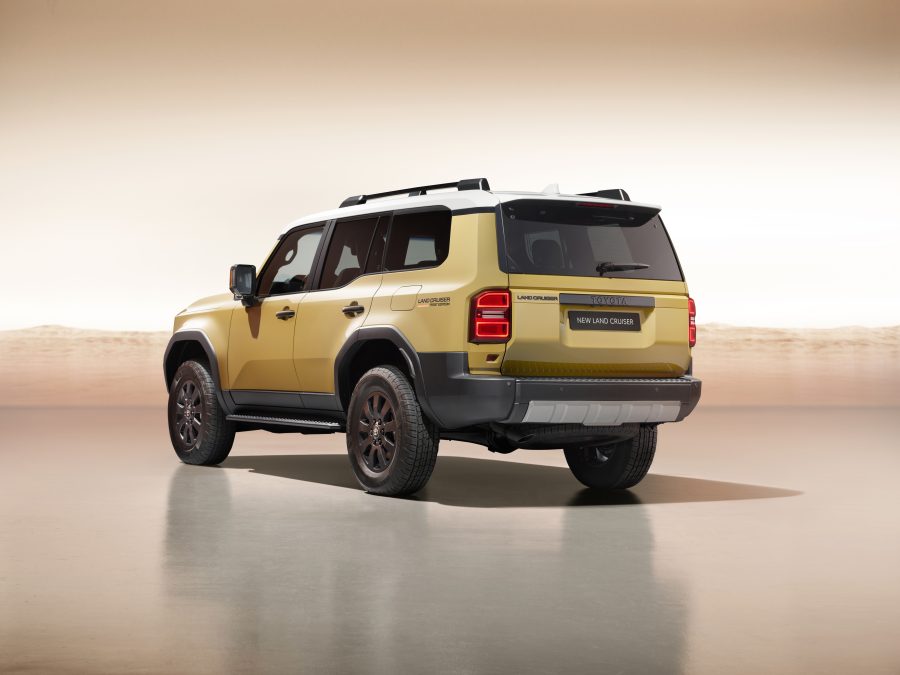
Further details will be provided closer to the pre-sales launch. So watch this space!
Learn more: First media reviews of the 2024 Toyota Land Cruiser
All information is correct at time of publishing.
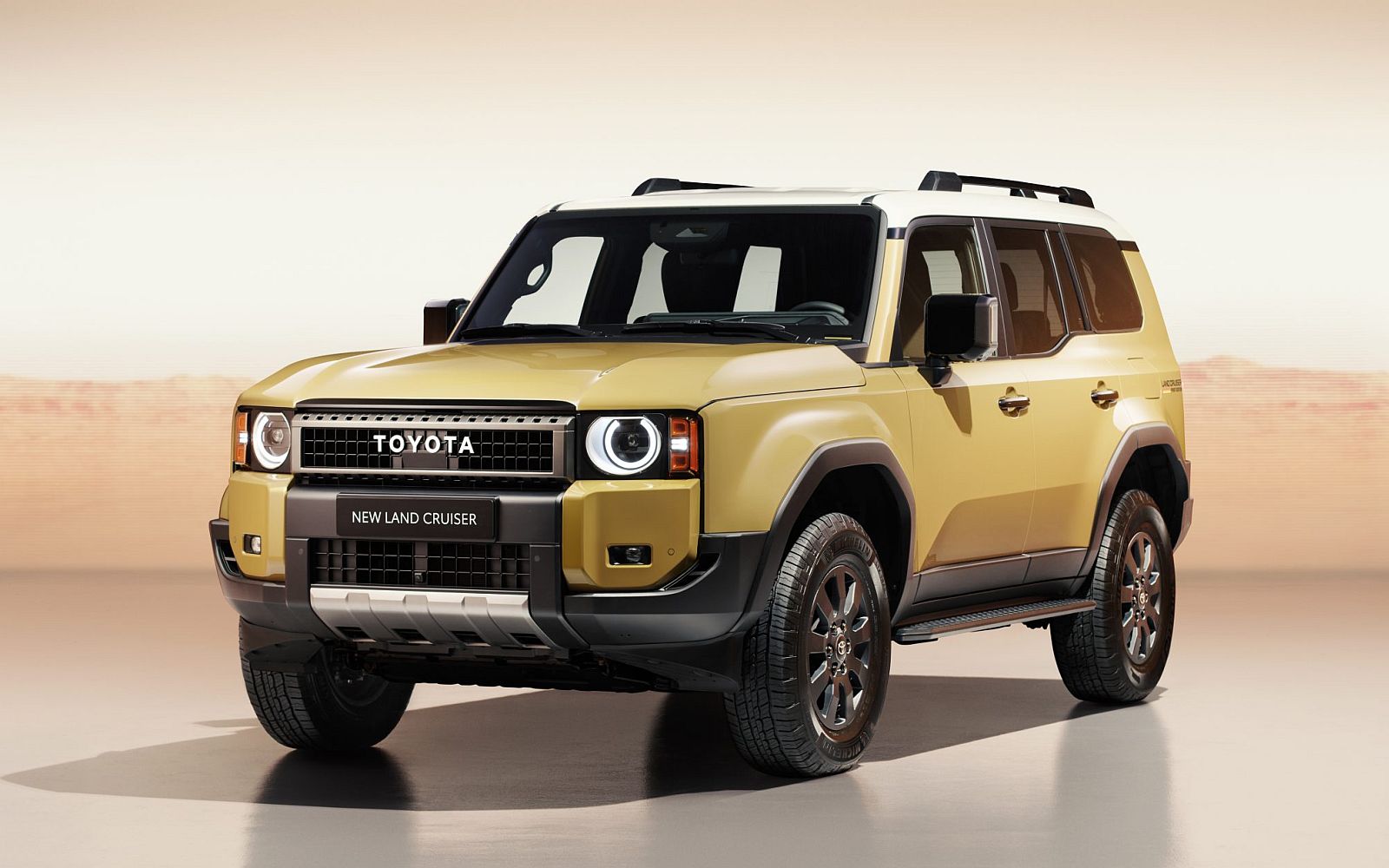

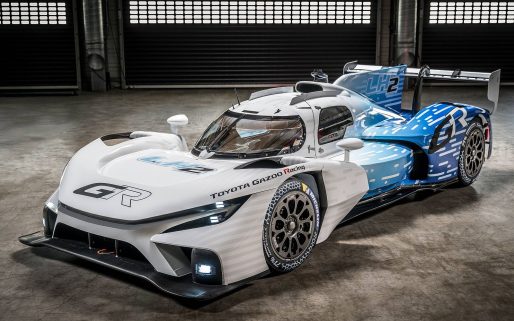
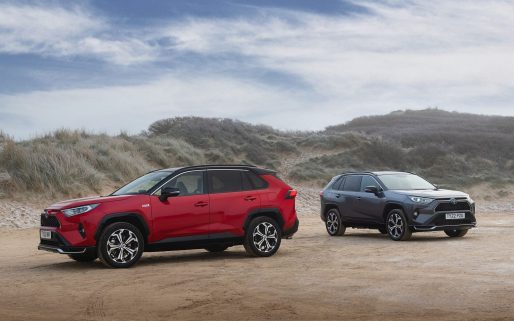
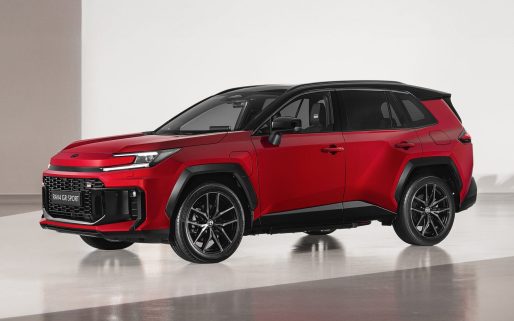
nice work from you guys, this is the best of the best
Hello Toyota
I have fitted a tow Hitch OEM and Electrics OEM purchased this week can you tell me are the plug in Electrics plug and play ??? I have lights all working on my trailer but the indicater beeper is not working , the Dealership told me as far as they know its plug and play ??? not realy an answer ??
Dave
Hi David, thanks for getting in touch.
We will need your full registration number to advise.
Thanks,
Toyota UK
Vehicle details
Hi David, thanks for that.
Our technical team have advised that it is likely to be plug and play and suggested double checking that all lights are working. Sometimes the issue you are experiencing could indicate a bulb failure. It may be best for whoever supplied and fitted the part to take another look, it’s hard to advise when we haven’t fitted it ourselves.
Thanks,
Hello thanks for the info regards the Tow electrics, but this is the problem I need to know what to expect so I know if its working also You say LIKELY TO BE PLUG AND PLAY ???? this is not an answer can you please find out these points
When the trailer is attached
WHEN PUT INTO REVERSE —
1/ Should it disable the rear collision braking ?
2/ Should it disable the rear sensors ?
3/ Should it disable the cross traffic ??
4/ should there be some sort of indication on the dash when towing
5/ Should the buzzer sound on indicating which is attached to the OE trailer ECU /loom ???
In other words disable what ever you dont need reversing a trailer
I have no bulb failures
Same old story BLAME THE CUSTOMER !! bought OE parts told they are Plug and Play srtictly followed proceedure But it does not work this is why I need to know what I should have OR NOT ??
I have fully working trailer lights but HAVE NOTHING ELSE.
I,m no expert but have owned 3 service centrs a Bodyshop for over 40 years and quite capable in fitting this sort of thing. the indecisive answers from the 2 Dealerships I have dealt with inc you speaks for itself There are 2 guys having there Tow bars inc electrics fitted this week BY DEALERSHIPS lets see how they get on
regards
Dave Goulden
Hi
When I ordered my 2024 Land Cruiser in the summer I added the option of a factory fitted fixed tow bar.
When the car was delivered the towbar was still on the invoice when I paid and I was told it will fitted later when it becomes available in the UK.
I was expecting the tow bar system fitted as standard on the US spec.
Can you explain why the UK spec cars did not include the towbars as ordered as now both the tow bar and new bumpers with built in cover will need fitting.
Can Toyota please let us know when they plan to supply the original towbar system which I ordered rather than offering a UK copy?
The car is also missing some mud protection guards in the inner wheel arch as I can see the alternator etc in the engine bay. As soon as I take the car through mud the engine and alternator will be covered in mud, and the grit in the mud will cause excess wear.
Thus must been missed off the UK cars during manufacture as even my Japanese spec 2012 FJ cruiser (Prado base) has these rubber guards in place.
The whole thing seems like although marketed as an off road car it has not been finished as one for the UK market. Not having the factory towbar available as it is in other international markets seems to be an important omission.
As a farmer I am in second thoughts as to the car although very modern tech wise is as actually suitable for purpose as 4WD m, particularly considering the cost of the UK spec First Addition which although much more expensive is missing much of the spec of US version of the same model.
Please let me know when the Toyota tow bar is available and if proper inner wing mud protection will added. ( I also paid extra for a protection pack again added as option when I ordered which I presumed would mean mean type of thing)
Best wishes
Adrian
Hi Adrian, thanks for getting in touch.
Your local Toyota Centre can assist with this, or you can contact the team at cr@toyota.co.uk
Thanks,
Hi Adrian
You will not get the factory Tow Bar or the Factory Electrics I have had a lot of trouble with mine read my questions above yours , I turns out there are 9 safety funtions you must disable when Towing !! according to the Manual also you will note I did not get a reply from this platform which is Toyota UK.
Good luck you will need it I have sold my LC after 6 weeks
Dave
The UK LC250 has been rushed to market and seems to have a lot of finnishing thats not actually finnished more of an after thought on some parts , no official advise from Toyota UK just skirting around questions regards the Towing aspects ie functions that you have to disable every time you get into the car only stating “Customer must disable Appropriate Functions “The manual says you must disable 9 functions in order to Tow , and also the car does not recognise its own OEM Towing electrics etc When fitting the OEM tow bar I bought from Toyota dealership I had to cut the rear bumper in half and put a very flimsy cover over the void which is held on with 3 tiny star press on washers and 2 tiny plastic buttons in fact the whole of the rear bumper is very flimsy , the F.E. speacial mud flaps are attached to the plastic arch liner again very flimsy and wont last 5 minutes off road or on road, I sold mine after 2000 miles and glad I did £80,000 !!! these are NOT Land Cruisers as we know them.
Hello Toyota
are you going to answer my questions regarding disabling certain functions in order to Tow with my LC 250 please
Dave
Hi Dave,
We’re not able to advise further on this, due to it being an aftermarket fitment.
Thanks,
Its not an aftermarket fitment all OEM parts purchased from Toyota Tamworth Steven Eagle can you answer now please ???
Hi David,
Apologies for the confusion.
Have Steven Eagell not been able to advise further?
Thanks.
Hi Dave
Still no reply from Toyota about a Towbar for my new Land Cruiser
I did not drive mine as I thought it was not fit for purpose and was going to sell it quick. Then I started using it as a car rather than as a the 4WD all rounder. I have now done nearly 4k and wish
I hadn’t as I could have still resold it to buy something that could tow. I can’t believe Toyota could supply this vehicle without a tow bar. I ordered mine with a towbar and when it arrived with out one the dealership was still happy to take the full payment for the car and added towbar would be available for them to fit.
No they have charged me £95 to code in the Towing electrics only to tell me they could not do it and then £360 to investigate it and then it turns out the vehicle will not recognise the its own genuine Toyota Towing electrics and never will !!!! Steven Eagell have been to put it politeley an absolute joke also treated me appallingly , They will not answer specific questions rearding the disabling of functions only to say I must disable ” APPROPRIATE ” Functions for Towing so back to the manual its states 9 functions must be disabled ??
Regards
Dave
Hi David,
We are terribly sorry to hear about these experiences.
Have you been in touch with our Customer Relations team at all?
Thank you.
Yes completely useless they will not answer my question regards what Functions to disable when towing only to state Customer must disable APPROPREATE functions and refuse to state which specific funtions a waste of time.
Hi David,
Thanks for confirming.
Did you get in touch with them via phone or email please?
Thank you.
Both many Emails and many phone calls Steven Eagell,s General manager at Stourbridge has treated my case appallingly in his own words he knows nothing about cars !! so how can anyone have a meaningfull conversation with him regards a complaint ?? its unbelievable.
Complaining to Steven Eagle is a complete waste of time, I have now learnt this because the complaint never gets past him ( Iain Sercombe ) because of this I am now out of pocket to around £3,500
Steven Eagell has never offered any sort of compensation at all no contribution to my losses at all please read my Google reviews on Stourbridge and Tamworth and Birmingham although the reviews only tell half the story the reviews are truthfull and factual see the Birmingham review on how the sales tried to virtualy black mail me into an order for the new LC 250 by forcing so called extras for the vehicle or they would not take the order around £3,800 in extras and are now denying all knowledge of me contacting them and them contacting me !!! this company is to be polite an absolute joke.
regards
David Goulden
Good afternoon David,
If we can take the Customer Relations open case reference, we’ll ask the team to get in touch.
Once again, please accept our apology for this ongoing disappointment.
Thank you.
Hello good luck with that !
My last case ref was 1254095
Reg VK74HXW
I say good luck as the General manager at Stourbridge (Mr Iain Sercombe ) just dismissed my case saying case closed, This is his attitude towards me and complaints
The lady at Toyota UK was Kam whom was very helpfull but I always got the feeling it was all very political.
regards
Dave
Hello David,
Thank you for your patience.
We haven’t been able to find a case with the reference you have provided.
Please may you double check that this is correct?
Thank you.
Sorry try 2154095 but there has been more than one case no. I think ?? Kam is fully aware of the case/ cases
regards
Dave
Hi David,
Thanks for your comment.
From what we can see on the case, you advised Kam that you have sold the vehicle.
We are terribly sorry to hear of the issues you faced during your ownership.
As the vehicle is no longer in your possession, there is limited action we can take from our end.
Thank you.
When is the 48v mild hybrid due in the UK. The local dealers are all in the dark.
Hi Jim,
Thanks for asking! Check out the Hilux Invincible X Double Cab 2.8 Diesel 48V Hybrid (204hp) here: https://brnw.ch/21wR5Mt
Thanks.
Hi
My tow bar has finally been fitted by Steve Eagell in Bishops Stortford. Took a while (over 4 Months) since receiving my 250 Land Cruiser although the tow bar was ordered as a factory fit. I believe the original parts were not available for the UK market until now but once fitted everything is working well. No issues towing or with any of the rear sensors being triggered by the trailer and the whole thing seems to be good. Towing is seamless with no knocks or rattles heard inside the cab. Overall the driving experience is good and with the tow bar fitted I am now happy with the truck. It was contacting Toyota Customer Relations (CR@toyota.com) that finally got things moving rather than the dealership.
Good afternoon Adrian,
That’s great to hear things are sorted, thank you for the update.
We wish you many happy miles in your Land Cruiser!